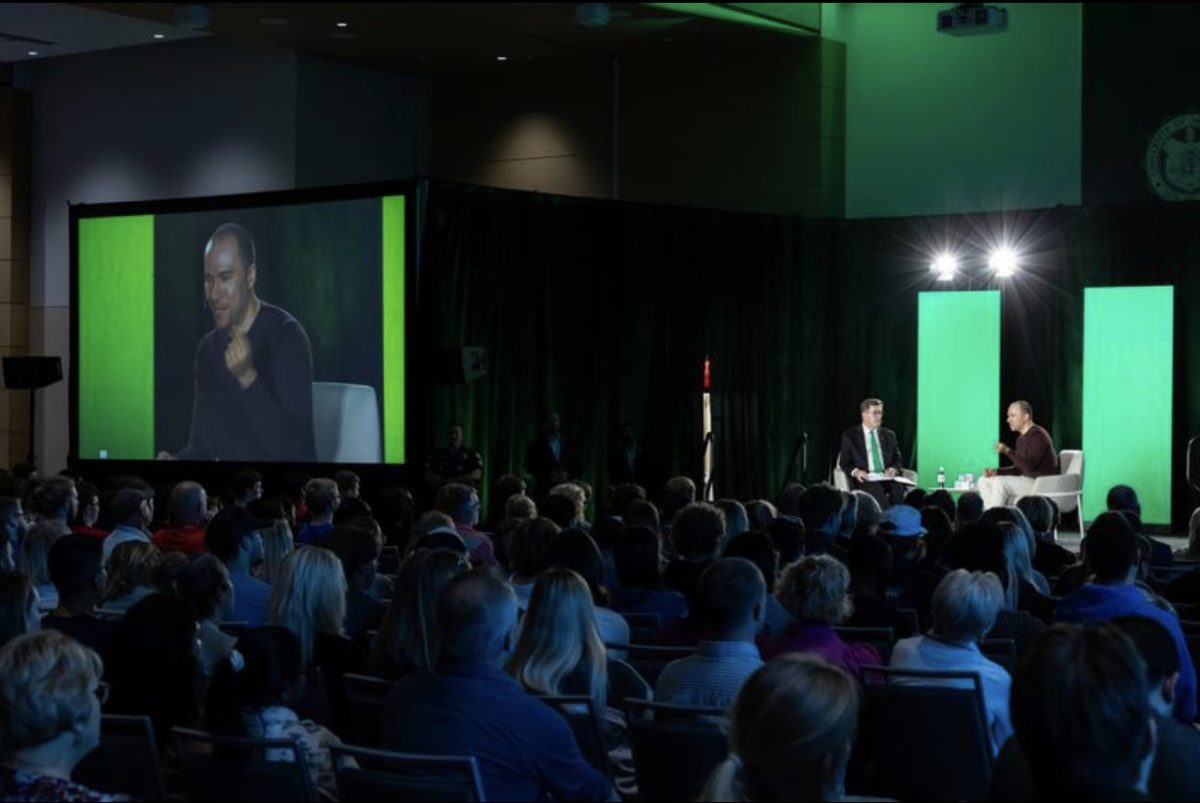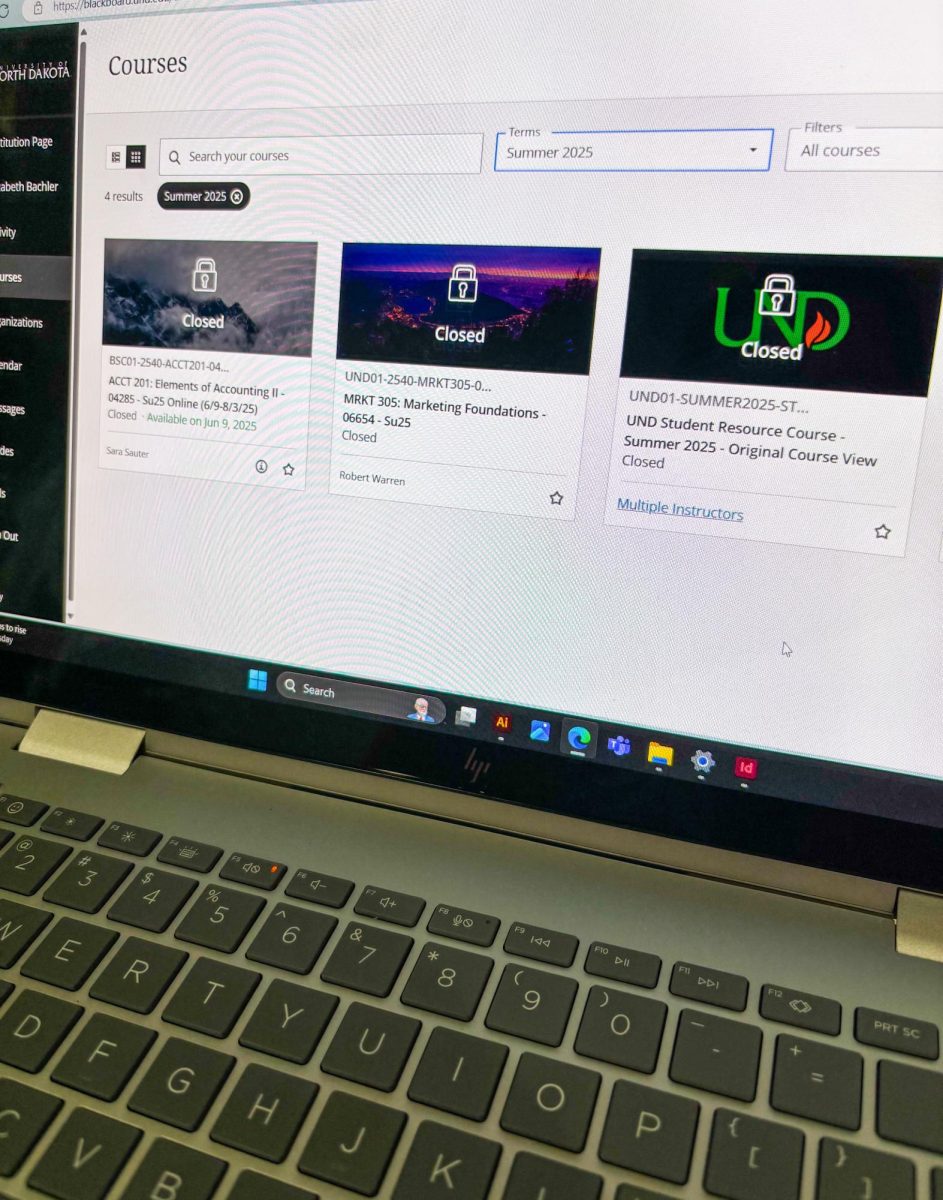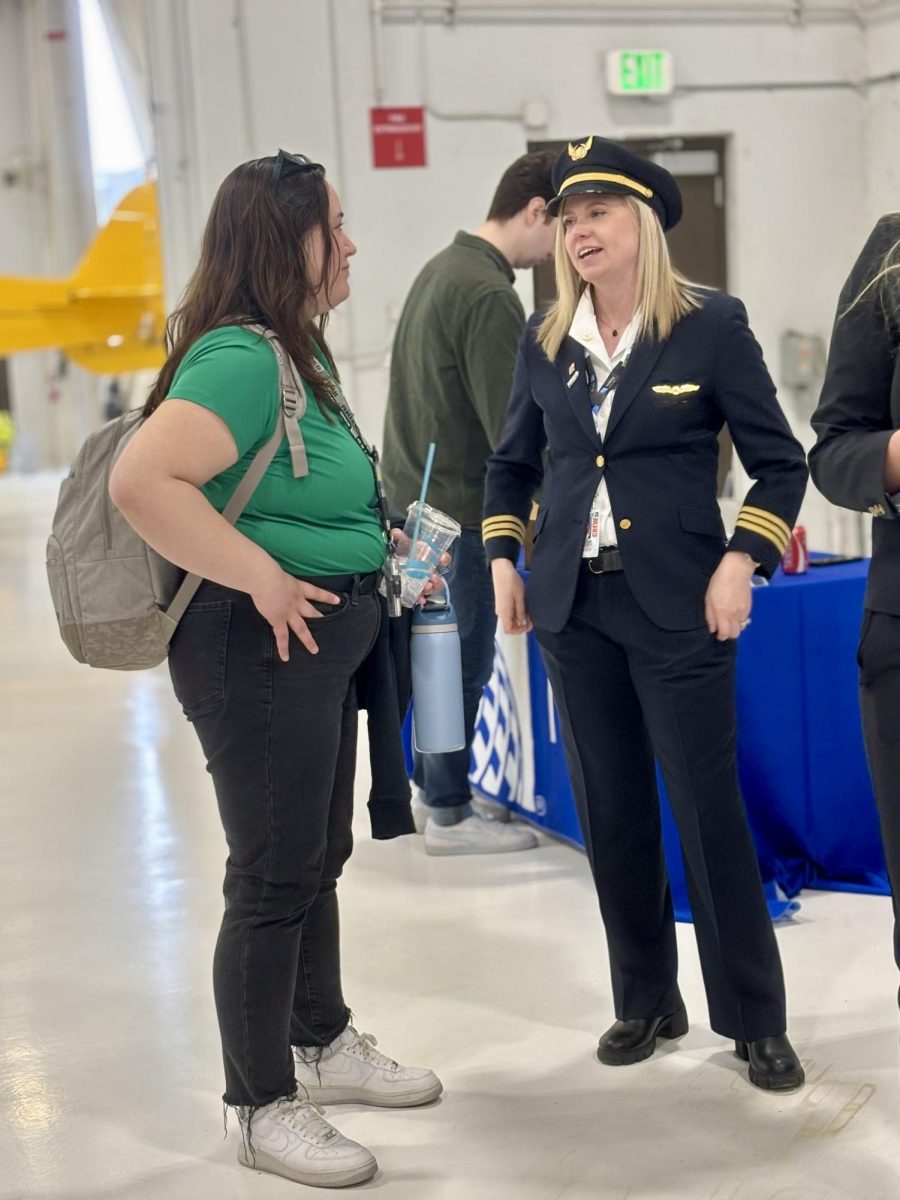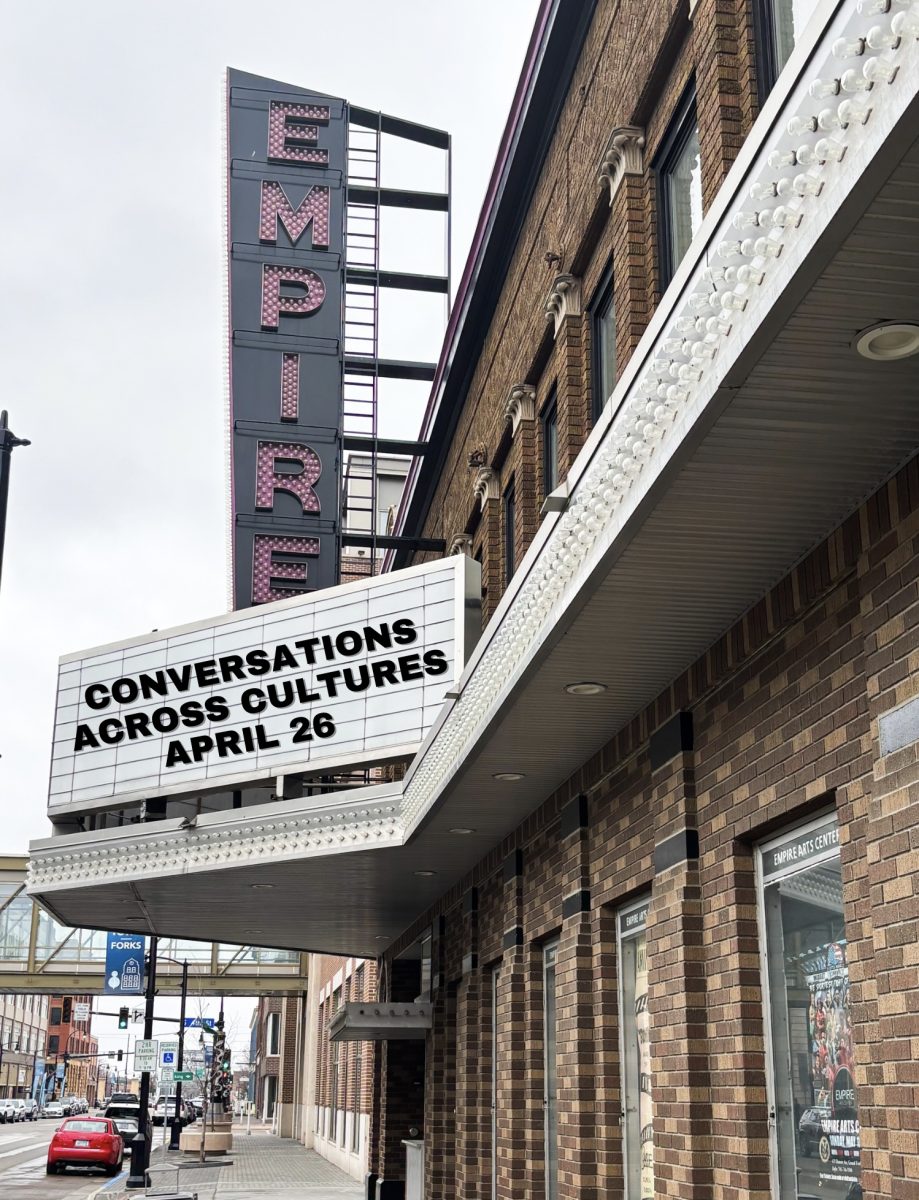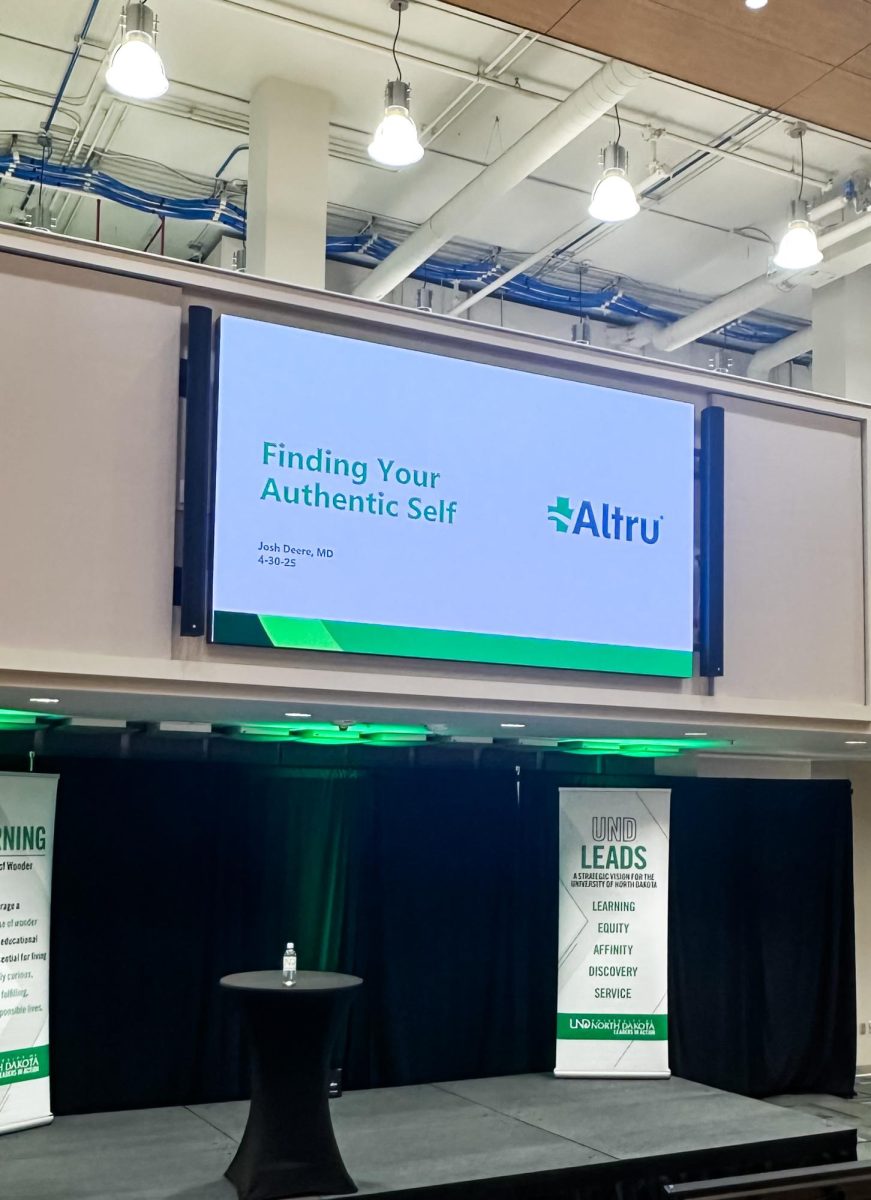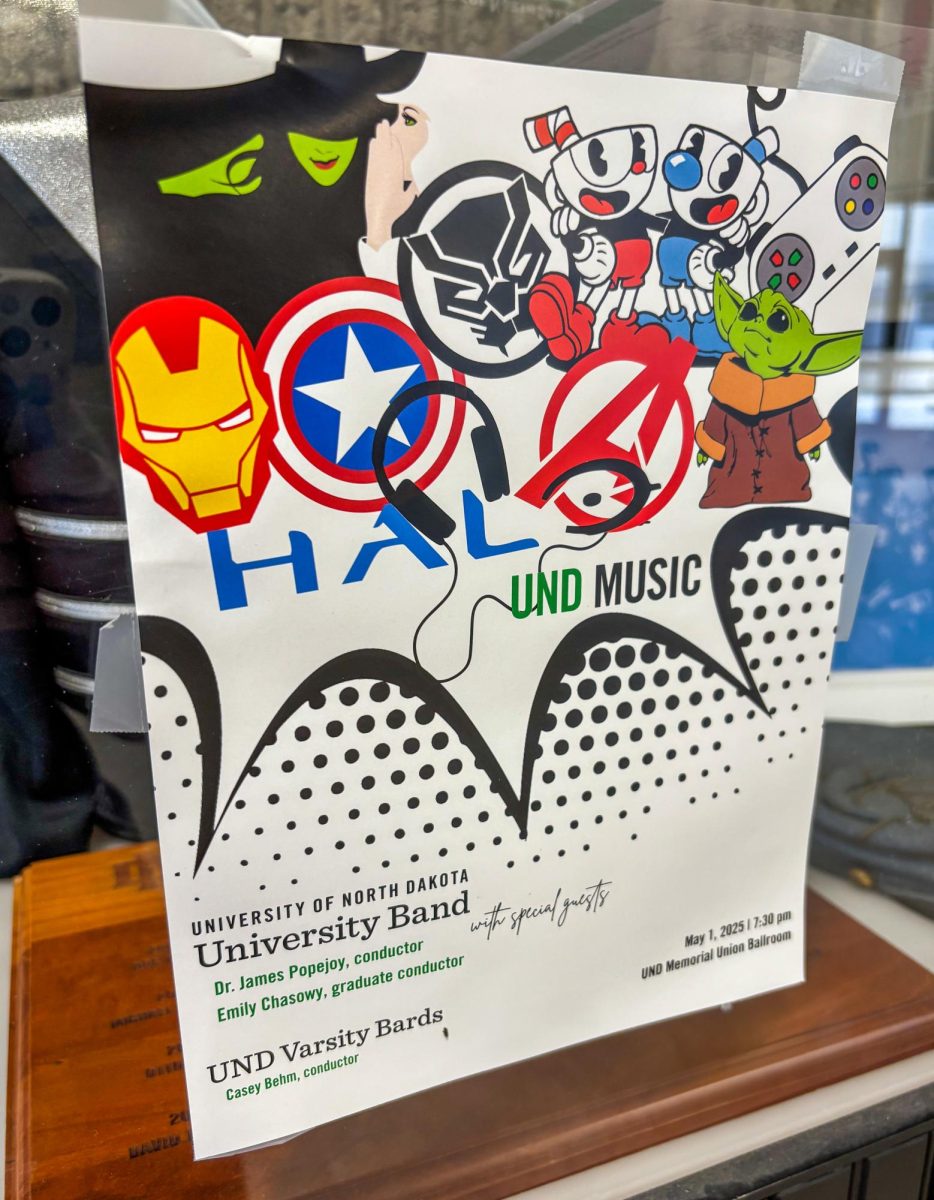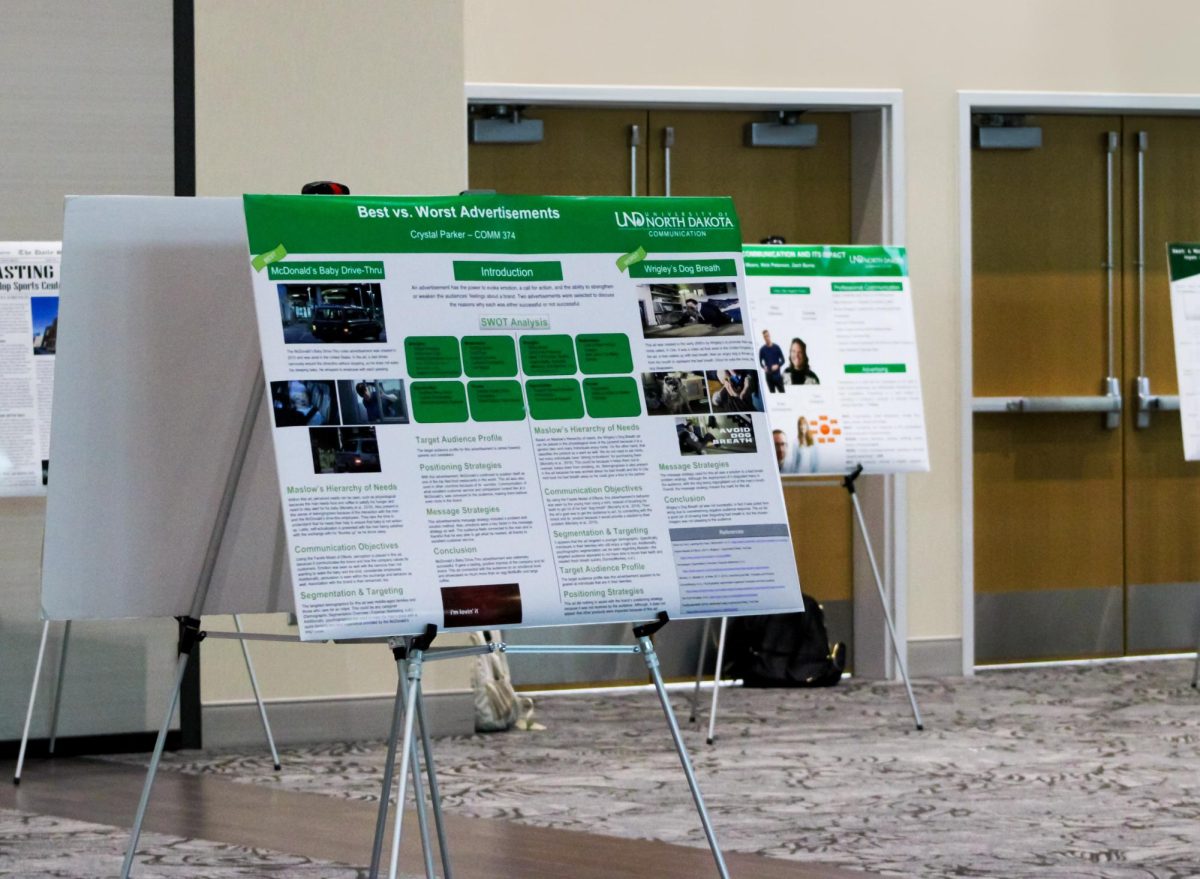In a packed room filled with over 500 attendees, the anticipation was palpable as Greg Brockman took the stage at the Memorial Union Ballroom on Tuesday, September 26th. With Attendees from all over the community and state along with his own family. David Dodds, director of communication and long-term member at the University of North Dakota said that in all of his experience as a student and faculty member, it was the greatest talk he has ever seen in his 30 years at UND.
I can attest the room was roaring with conversation and energy just prior to Brockman and President Armacost’s entrance. As the event went on, I along with those around me hung onto every word as Brockman talked about his experience attending school in Grand Forks and living in his hometown of Thompson, North Dakota, to being at the forefront of the Artificial Intelligence revolution. President Armacost’s opening remarks set the stage for an evening that would captivate and challenge our perceptions of AI while highlighting an important alum from our very own community.
Brockman’s early life in Grand Forks was marked by homeschooling and a passion for math, computers, and research. His parents’ unwavering support and his exposure to algebra at a young age fueled his curiosity. Eventually Greg learned calculus as he entered high school and his next step was to take college courses while he was still in high school where he learned a valuable lesson, “whatever you do, make it uniquely yours.”
Looking back, he credited Professor Ryan Zeer as pivotal in his college years, where classes fostered a supportive environment. Subjects like organic chemistry, philosophy, math, and even Latin laid the foundation for his interconnected worldview, highlighting that everything has roots in the past.
Brockman’s journey led him to create Dolly, Stripe, and Chat GPT, an app that garnered millions of downloads, being the fastest growing app of all time. But it was not always a growth curve for Brockman, his entrepreneurial spirit laid the groundwork for his future endeavors. Despite leaving UND and dropping out of both MIT and Harvard to pursue startups, he never stopped learning and continued to collaborate with professors and engage in research. Still, many of his startups never reached the light of day and ended up becoming failures that became steppingstones to growth. An important note that should be taken to heart.
Prior to delving deep into learning Brockman’s exploration of AI led him to Russia, where he discovered Alan Turing and the Turing Test, but what captivated his mind the most was learning about how one could build a system that aids in solving problems that the user does not have the solution to. This concept led him to the potential of neural networks and recognized that AI’s impact could be profound eventually causing him to take this concept when working on Open AI. Although its growth was slow at the start, it rapidly built up causing new questions that needed to be answered.
Along with contemplating AI’s global impact, Brockman pondered the ethical considerations and the ongoing battle between concealing and unleashing AI’s full potential eventually deciding that opening it to the public would be the best course of action so that we can still have our hands on the helm and help steer it for humanities benefit.
Brockman painted a vivid picture of AI’s potential to solve global problems and underscored the importance of collaboration. He stressed that Chat GPT, although impressive today, is just the beginning. Artificial General Intelligence, or human-level intelligence, is the goal. The fear of AI hinges on technology levels, inputs, and data algorithms. AI is not just a flowchart; it is a smart system that learns and can improve one day having the potential to become a super intelligence that will be able to solve our most complex problems.
In a decade, the notion of a super intelligent or AGI provides both risks and benefits. Brockman highlighted that the world is constantly evolving, requiring more coordination among world leaders, and he was happy to tell us they are aware of the implication of how it can be used but alluded to the fact that we still must contend with the fact of human nature. We are still disconnected as a global system and must collaborate more or face the risks. Discussions revolved around guardrails and the need for specialized centers to house AI systems, along with specialized groups monitoring AI usage.
Of course we could not have this discussion without acknowledging the AI in the room. How can the university best prepare future students? It is known that with tools like these students, professionals, and even educators must contend with their use, and so begs the question where do we want AI’s influence?
Brockman stressed the need for us to become experts in AI. He explored the balance between AI as a direct replacement for traditional jobs and its potential to create new opportunities. AI could serve as personalized educators, better helping students and providing them assistance in their task not just to breeze through assignments and skip past learning while using AI. Still Open AI’s goal is to build layers of expertise, not entirely shaping the way we learn. It is up to us, the users, to decide how to best to use this tool.
One thing that was interesting was Brockman’s response when it came to developing AI to be more human-like. Adding emotions to AI systems, making an analogy, and emphasizing that emotions “are convenient computational shortcuts.” Emotions help us in our decision-making process, whether it is in what we say, how we act, or even how we dress. Think of a typical day in your life, how are your thoughts influenced by how you feel? So, training AI in this aspect is crucial for a more human-like interaction.
Brockman’s insightful journey culminated in Open AI’s vision as a hope-based company. It invites us to ponder what if this vision of AI succeeds and what it means for the future of humanity. In the presence of over 500 eager minds, Brockman’s interview shed light on the complexities and potential of AI. Leaving us hopeful but cautious, a reminder that as we venture into the world of AI, hope and risk must be balanced to shape a future where AI serves humanity’s best interests.
Davíd Moreno is a Dakota Student General Reporter. He can be reached at davíd.moreno@und.edu.


